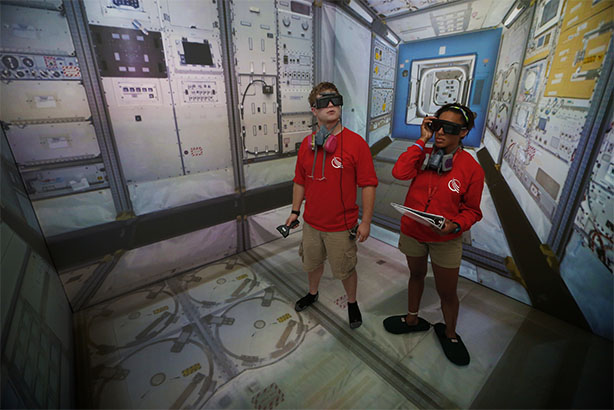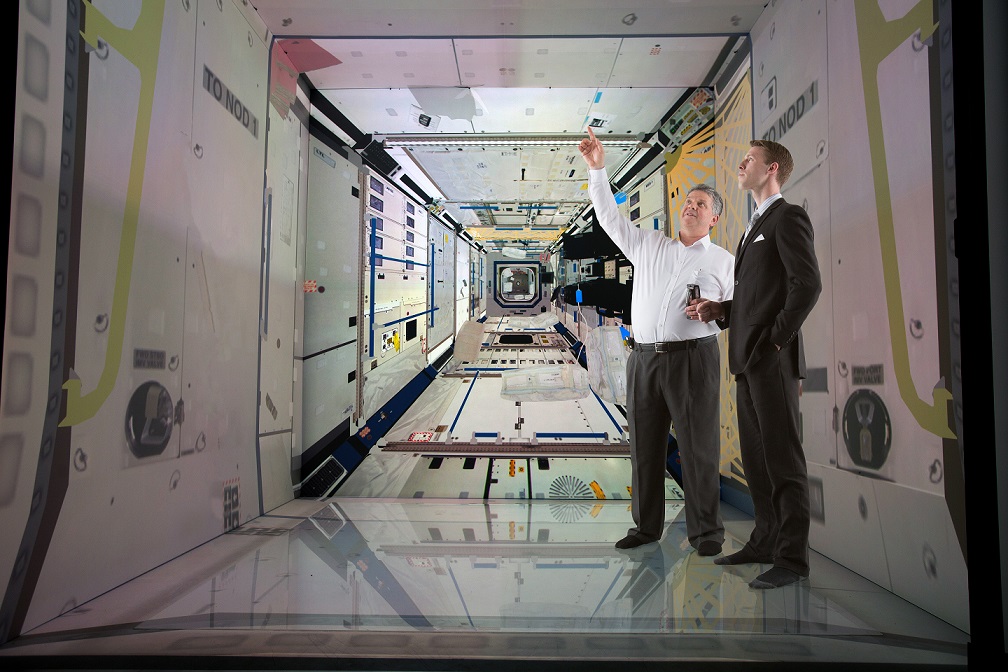Astronauts can experience a number of in-flight life-threatening emergencies aboard the International Space Station (ISS), including decompression, fire, and toxic spills (e.g., ammonium leaks). Although these emergencies are rare, several incidents have occurred during space operations. Stress inoculation training (SIT) can potentially help astronauts build resilience to adverse experiences. As inoculation implies, SIT exposes individuals to minor stressors that can enhance resistance to stress.
A high-fidelity virtual reality environment (VRE) utilizes less resources than traditional fire training and can provide highly controlled, gradually increasing levels of stress for inoculation. Furthermore, VRE can mimic aspects of microgravity that an earth-based simulation cannot (e.g., simulated smoke were buoyancy is not a factor).
A high-fidelity virtual reality environment (VRE) utilizes less resources than traditional fire training and can provide highly controlled, gradually increasing levels of stress for inoculation. Furthermore, VRE can mimic aspects of microgravity that an earth-based simulation cannot (e.g., simulated smoke were buoyancy is not a factor).

Our research is conducted at the Virtual Reality Applications Center (VRAC) at Iowa State University. VRAC is home to the C6; the C6 is the world’s highest resolution virtual reality room. The facility is a 10 ft. x 10 ft. x 10 ft. cube in which all six screens have projected interactive stereoscopic images that provide total immersion in a virtual world. NASA-provided computer models of the U.S. Orbital Segment (USOS) interior of the ISS allows our researchers the train users in hazardous environment in order to build a resilience to stressful situations.
Through the use of state-of-the-art physiological sensors, user stress levels are measured and the simulation can change based on the level of stress resistance of the user. Future applications may include mobile training systems for a range of similar occupations.
Through the use of state-of-the-art physiological sensors, user stress levels are measured and the simulation can change based on the level of stress resistance of the user. Future applications may include mobile training systems for a range of similar occupations.

